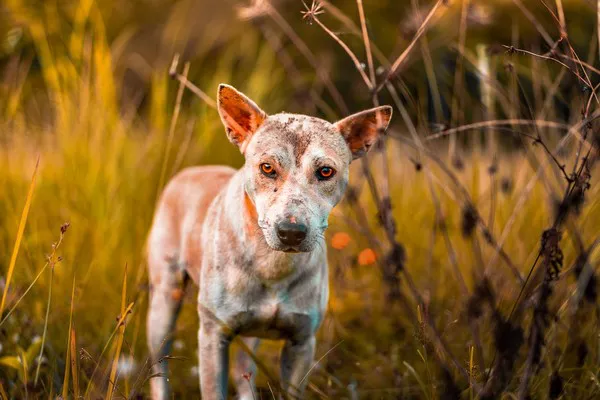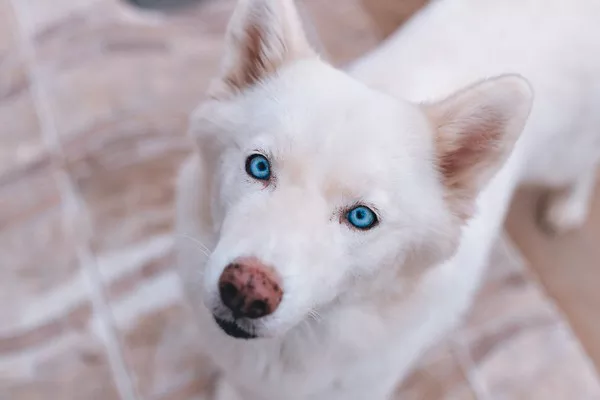Shar-Pei dogs, known for their distinct wrinkled skin and charmingly serious expressions, have a storied history that traces back thousands of years to ancient China. The purebred Shar-Pei has been well-documented, but what happens when this unique breed is mixed with others? This article delves into the intricacies of Shar-Pei mixes, exploring their types, habits, health conditions, and dietary needs.
The History and Characteristics of the Purebred Shar-Pei
What Makes the Shar-Pei Unique?
The Shar-Pei’s appearance is unmistakable, with its loose, wrinkled skin, “hippopotamus” face, and blue-black tongue. These characteristics are not just for show; historically, they served a purpose in the breed’s origins as a guard dog and fighter. The loose skin made it difficult for other animals to grab onto them effectively.
Originating in the Guangdong province of China, the Shar-Pei was used for hunting and guarding. The breed nearly faced extinction in the mid-20th century, but dedicated breeders revived it, and it was officially recognized by the American Kennel Club (AKC) in 1992.
What are the Temperament and Behavior Traits?
Shar-Peis are known for their loyalty, intelligence, and independence. They are often reserved around strangers but very affectionate with their families. These dogs require firm, consistent training and socialization from an early age to manage their sometimes stubborn nature.
Common Shar-Pei Mixes
Shar-Peis can be mixed with various breeds, resulting in unique combinations that inherit traits from both parents. Here are some common Shar-Pei mixes and what makes them special.
Shar-Pei Lab Mix (Lab-Pei)
What are the Characteristics of a Lab-Pei?
The Lab-Pei combines the Shar-Pei with the Labrador Retriever, blending the Shar-Pei’s distinctive wrinkles and sturdy build with the Lab’s friendly and energetic disposition. Lab-Peis are typically medium to large dogs, with a mix of the Shar-Pei’s deep-set wrinkles and the Lab’s athletic frame.
What is Their Temperament Like?
Lab-Peis often inherit the Labrador’s friendly and outgoing nature, making them excellent family pets. They are usually good with children and other animals, although early socialization is crucial. They also benefit from the Labrador’s intelligence and the Shar-Pei’s loyalty, creating a devoted and trainable companion.
Shar-Pei Pitbull Mix (Shar-Pit)
What are the Physical Traits of a Shar-Pit?
A mix between the Shar-Pei and the American Pitbull Terrier, the Shar-Pit is a robust and muscular dog. This mix typically exhibits a combination of the Shar-Pei’s wrinkles and the Pitbull’s defined musculature. Their coat can vary, often short and dense, reflecting both breeds’ heritage.
How Do They Behave?
Shar-Pits are known for their loyalty and protective instincts. They are often very attached to their families and can be wary of strangers, making them excellent watchdogs. Due to the Pitbull’s strength and the Shar-Pei’s independence, this mix requires a confident and experienced owner who can provide proper training and socialization.
Shar-Pei German Shepherd Mix (Shep-Pei)
What Do Shep-Peis Look Like?
The Shep-Pei, a mix between the Shar-Pei and the German Shepherd, often displays a combination of both breeds’ physical traits. They usually have the Shar-Pei’s wrinkles and broad head, combined with the German Shepherd’s athletic build and alert expression.
What is Their Temperament?
Shep-Peis are intelligent, protective, and loyal. They often inherit the German Shepherd’s herding instincts and the Shar-Pei’s guarding instincts, making them excellent family protectors. These dogs are highly trainable but require consistent training and mental stimulation to prevent boredom and behavioral issues.
Shar-Pei Pug Mix (Ori-Pei)
What are the Physical Features of an Ori-Pei?
The Ori-Pei is a mix between the Shar-Pei and the Pug. This mix tends to be smaller than the purebred Shar-Pei, with the Pug’s compact body and the Shar-Pei’s characteristic wrinkles. Ori-Peis often have a short, smooth coat and can come in various colors.
How is Their Behavior?
Ori-Peis are typically friendly and affectionate, inheriting the Pug’s sociable nature and the Shar-Pei’s loyalty. They are usually good with children and can be playful and energetic. However, they can also be a bit stubborn, so early training and socialization are important.
Health Conditions in Shar-Pei Mixes
Shar-Peis and their mixes can be prone to various health conditions due to their unique genetics. Understanding these potential issues is crucial for providing the best care.
What are the Common Health Issues of Shar-Pei?
Skin Problems
The Shar-Pei’s distinctive wrinkles can be prone to skin infections and irritations. These dogs often suffer from conditions like pyoderma and demodectic mange. Regular cleaning and inspection of their skin folds are essential to prevent infections.
Hip Dysplasia
Hip dysplasia is a common issue in many larger dog breeds, including Shar-Peis and their mixes. This condition can lead to arthritis and mobility issues. Maintaining a healthy weight and providing joint supplements can help manage this condition.
Entropion
Entropion, a condition where the eyelids roll inward, causing the lashes to irritate the eye, is common in Shar-Peis due to their heavy facial wrinkles. This condition often requires surgical correction to prevent ongoing discomfort and potential damage to the eyes.
How to Manage These Health Issues?
Regular Vet Visits
Regular veterinary check-ups are crucial for early detection and management of health issues. Routine examinations can help monitor for conditions like hip dysplasia and skin infections.
Proper Grooming
Regular grooming, including cleaning the skin folds, is essential for preventing skin issues. Using a gentle, vet-recommended cleanser can help keep the skin healthy.
Balanced Diet and Exercise
A balanced diet tailored to the dog’s specific needs, along with regular exercise, can help maintain a healthy weight and reduce the risk of obesity-related issues. Joint supplements and omega-3 fatty acids can also support overall health.
Dietary Needs of Shar-Pei Mixes
Diet plays a significant role in the overall health and well-being of Shar-Pei mixes. Understanding their specific dietary needs is key to ensuring a long and healthy life.
What Should a Shar-Pei Mix Eat?
High-Quality Protein
High-quality protein sources are essential for Shar-Pei mixes to support their muscle mass and overall health. Look for dog foods with named meat sources, such as chicken, beef, or fish, listed as the primary ingredient.
Balanced Nutrients
A balanced diet that includes essential vitamins and minerals is crucial. Omega-3 and omega-6 fatty acids can help maintain a healthy coat and skin, while glucosamine and chondroitin support joint health.
Grain-Free or Limited Ingredient Diets
Some Shar-Pei mixes may benefit from grain-free or limited ingredient diets, especially if they have food sensitivities or allergies. These diets can help reduce the risk of digestive issues and skin irritations.
How to Feed a Shar-Pei Mix?
Portion Control
Portion control is vital to prevent obesity, which can exacerbate health issues like hip dysplasia. Follow the feeding guidelines provided by the dog food manufacturer and adjust based on your dog’s activity level and weight.
See Also: How Much Does a Chinese Shar Pei Cost?
Regular Feeding Schedule
Establishing a regular feeding schedule can help maintain a healthy weight and prevent digestive issues. Divide the daily food intake into two or three meals to avoid overeating and bloat.
Fresh Water Availability
Always provide fresh water to keep your Shar-Pei mix hydrated. Proper hydration supports overall health and aids in digestion.
Training and Socialization of Shar-Pei Mixes
Proper training and socialization are crucial for Shar-Pei mixes to ensure they are well-behaved and adaptable companions.
What are the Best Training Techniques of Shar-Pei?
Positive Reinforcement
Positive reinforcement techniques, such as using treats, praise, and toys, are effective for training Shar-Pei mixes. These dogs respond well to rewards and encouragement.
Consistency and Patience
Consistency and patience are key in training. Establish clear rules and boundaries, and be patient as your dog learns. Shar-Pei mixes can sometimes be stubborn, so persistence is necessary.
Early Socialization
Early socialization is critical for Shar-Pei mixes to develop well-rounded temperaments. Expose your puppy to various environments, people, and other animals to build confidence and reduce fearfulness.
How to Address Shar-Pei Behavioral Issues?
Identify the Cause
Understanding the root cause of behavioral issues, such as anxiety, boredom, or lack of training, is the first step in addressing them. Consult a professional trainer or veterinarian if necessary.
Provide Mental and Physical Stimulation
Shar-Pei mixes require both mental and physical stimulation to prevent boredom-related behaviors. Engage in regular play, exercise, and training sessions to keep your dog mentally and physically active.
Seek Professional Help
If behavioral issues persist, seeking help from a professional dog trainer or behaviorist can provide tailored strategies and support to address specific problems.
Conclusion
Shar-Pei mixes are fascinating and unique dogs, blending the distinctive characteristics of the Shar-Pei with other breeds. Understanding their history, health conditions, dietary needs, and training requirements is essential for providing the best care. Whether it’s a Lab-Pei, Shar-Pit, Shep-Pei, or Ori-Pei, each mix offers a special blend of traits that can make them wonderful companions. By prioritizing their health and well-being through proper care and training, you can ensure that your Shar-Pei mix thrives and brings joy to your life for many years to come.
Related Topics:


























